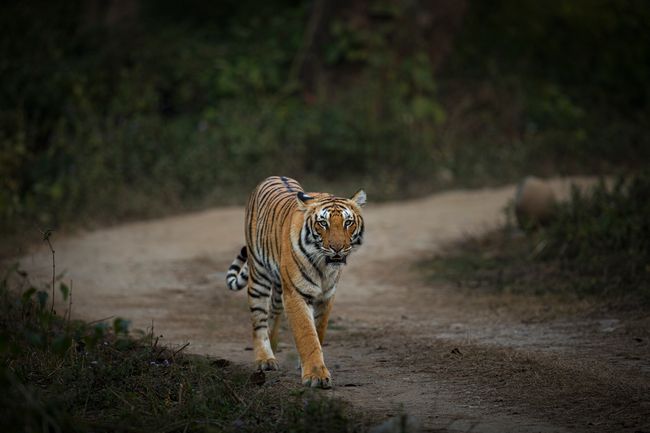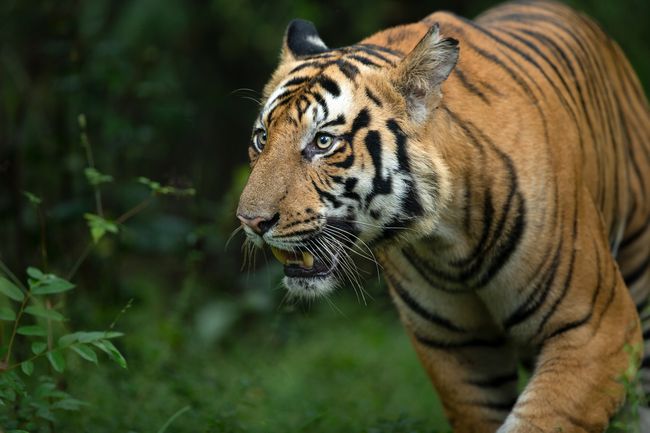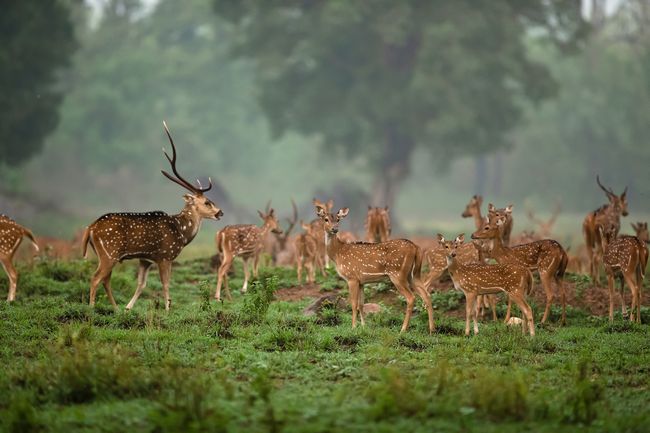PENCH, KANHA & BANDHAVGARH TIGER SAFARI TOUR
12 NIGHTS / 13 DAYS
Do you want to have a close look at the intriguing world of tigers? Then, on the Bandhavgarh, Kanha, and Pench tiger safari tour of India, you might be in for a treat as Just Tigers provides you a sneak view into the intriguing life of these wild cats in their natural habitat. Visit one of the tiger reserves in Pench, Kanha, or Bandhavgarh to see these tawny-coated giants peeking out from behind bushes or some of the friendlier ones perched on tree branches taking in the morning sun.
A trip into the wild isn’t complete unless you visit one of these tiger reserves. Experience the atmosphere of these royal tigers up near and personal, and have the opportunity to photograph them. The British Foresters were the ones who first saw them in the Central Provinces. Rudyard Kipling later memorialised these jungles in his well-known “The Jungle Book.” The book’s creator received the Nobel Prize in literature for his fanciful writings, which drew inspiration from the Bandhavgarh, Kanha, and Pench jungles. With the help of his merry band of pals, Bagheera, Baloo, and Kaa, his well-known fictional character Mowgli was portrayed as a native of these jungles who lived in and explored the hills of Seoni.
This journey, which is an endorse among all of our visitors, completely fulfils your goal of seeing the tiger in its native environment. Kanha, Bandhavgarh, and Pench, three premier reserves in Central India, are plenty to fulfil your desire to see tigers in the Wild Wild East! The effort put forth to travel across the world is amply repaid by some magnificent Tiger sightings, often for hours on end, in the rural and tribal country away from the huge and congested metropolises! In addition to the chance to see tigers, these parks also offer the chance to see leopards, Indian wild dogs, gaur, the Hard Ground Barasingha, jackals, wolves, sloth bears, and many other species. These parks are also home to over 300 different bird species!
Destination Covered
- Day 01: Arrival in New Delhi
- Day 02: New Delhi - Nagpur - Pench (Flight + 100 kms/2 hrs drive from airport)
- Day 03: In Pench National Park
- Day 04: Pench - Kanha (210kms,4-5 hrs drive)
- Day 05 - 07: In Kanha National Park
- Day 08: Kanha - Bandhavgarh (280kms, 6 hrs drive)
- Day 09 - 11: In Bandhavgarh National Park
- Day 12: Bandhavgarh - Jabalpur - New Delhi (200km, 4 hr drive + flight)
- Day 13: New Delhi - Fly Out
Detailed Itinerary: Pench, Kanha & Bandhavgarh tiger safari Tour
Day 01: Arrival In Delhi
Our representative will meet you at the New Delhi Airport and ensure a smooth transfer to the hotel. They will also assist you with checking in at the hotel. You will receive and receive explanations of all the documents linked to your travel. Stay the night at the hotel.
Day 02: New Delhi - Nagpur - Pench (Flight + 100 kms/2 hrs drive from airport)
After a leisurely breakfast, you’ll be taken to the airport to catch a flight that will take you from there to Nagpur at 5:55 in the morning. After meeting at the airport, the travelers will drive for two hours to the Pench National Park Post, where they can check into the lodge. The passengers on board can take a jeep tiger safari in the afternoon after lunch to travel to the national park. At the resort, visitors can also have dinner and spend the night.
Day 03: In Pench National Park
While meals and an overnight stay are planned at the resort, morning and afternoon jeep tiger safaris to the Pench National Park are planned. This tropical wet deciduous forest in Southern India covers 758 sq km and is mixed with tropical dry deciduous teak. Many streams and “nallahs” that are primarily seasonal transverse the area.
Despite the Pench River drying up at the end of April, there are a number of watering holes for wild animals, known locally as “dohs.” During the water shortage, the Pench Reservoir in the park’s middle is the sole significant water source. Due to the large concentration of prey along the Pench River, the watering holes are the greatest places to see tigers. Here is where tigers typically search for prey. Although they occasionally appear in the deep forest, leopards mostly function in the outskirts.
Cheetal and Sambar are frequently spotted grazing in Pench in open areas along roadsides, the banks of rivers, and reservoirs. Anywhere throughout the Park, jackals might be seen in quest of food. Wild dog packs of up to 15 or more have been spotted close to the Reserve’s Chhedia, Jamtara, Bodanala, and Pyorthadi sections.
In the summer, gaur herds are frequently seen by streams and bamboo groves. The rocky sections are home to sloth bears, who love the mahul bel-infested woodland. In extremely small numbers, chinkaras are also seen in open spaces.
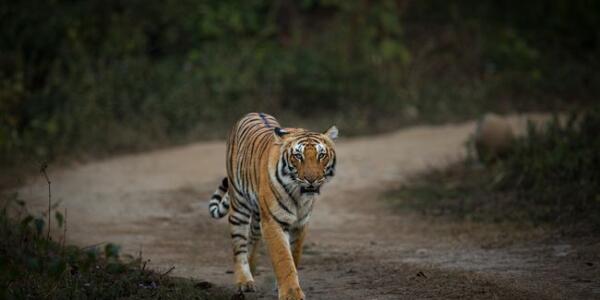
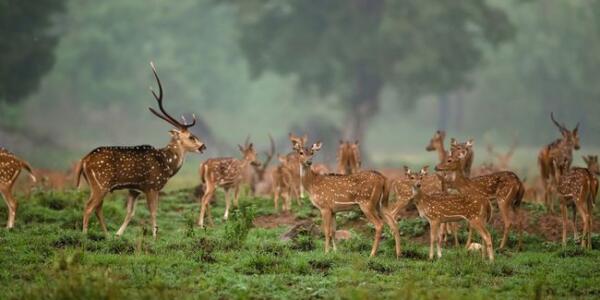
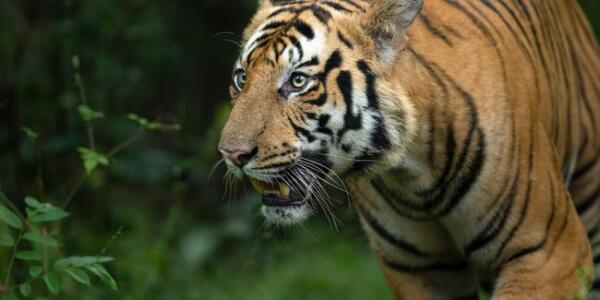
Day 04: Pench - Kanha (210kms, 4-5 hrs drive)
After a morning jeep tiger safari, you can drive in 4-5 hours to Kanha National Park from Pench National Park. Visitors can check into the resort in Kanha after arriving at the park, where they can have dinner and spend the night.
Day 05 - 07: In Kanha National Park
At 0500 hours, get up, have tea or coffee and some cookies, and then head to the national park for the morning tiger safari. 940 sq. km of Kanha’s sal and bamboo woods, undulating grasslands, and meandering streams make up the core of the Kanha Tiger Reserve, which was established in 1974 as part of Project Tiger.
The park is the sole place where the rare hardground Barasingha may be found (Cervus Duvauceli Branderi). This is the actual Kipling nation that he eloquently described in The Jungle Book. A set location is where the lodge’s packed breakfast is served, spread out on the safari vehicle’s bonnet. Enjoy your breakfast in Kanha National Park’s untamed surroundings. If you haven’t already, keep looking for the exlusive Tiger while taking in the clean, stimulating environment. Reach the resort from tiger safari at 11:30. Lunch is offered after you’ve showered. After a full-day tiger safari, get back to the hotel by six o’clock. Eat dinner there and spend the night.
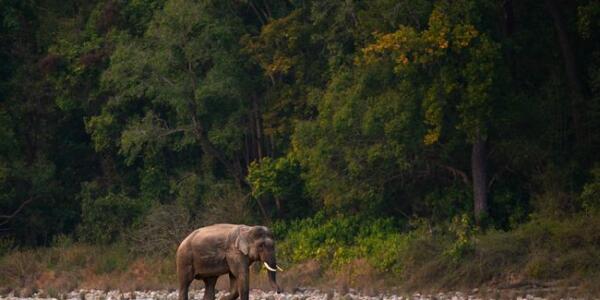
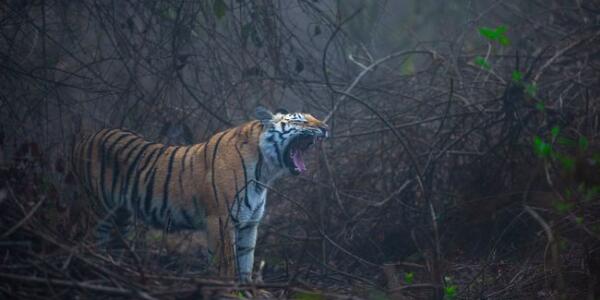
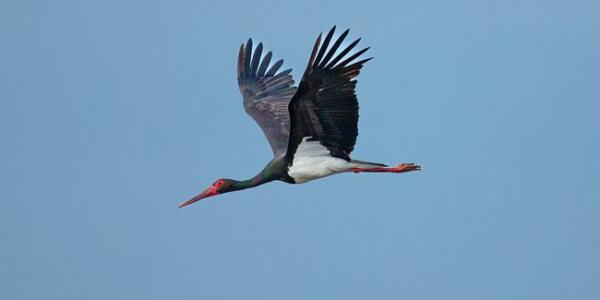
Day 08: Kanha - Bandhavgarh (280kms, 6 hrs drive)
Jeep tiger safari to the Kanha National Park in the morning. Drive to Bandhavgarh for six hours after lunch. After you arrive, check in to the lodge, have supper, and spend the night there.
Day 09 - 11: In Bandhavgarh National Park
In the morning and the afternoon, visitors are taken on jeep tiger safaris across the national park. The strong tiger population in the Bandhavgarh National Park is its most notable feature. The renowned White Tigers of Rewa were first uncovered here. Leopards, Blue Bulls, Indian Gaur (Bison), Chausingha (Four Horned Antelopes), Spotted Deers, Sambar Deers, Exotic Boar, Sloth Bears, Fox, Jackals, Wild Dogs, and others are among the park’s numerous wild attractions. The park is home to 250 different bird species and at least 22 different mammal species. The Ratel, Porcupine, Small Indian Civet, Palm Squirrel, Lesser Bandicoot rat, Jungle Cat, and timid Hyenas are some of the other animals that may be seen in Bandhavgarh.
The earliest traces of human habitation can be found in the park in the sandstone caves to the north of the fort. A few of them have Brahmi inscriptions from the first century B.C. The Maghas from the first century A.D., the Vakatakas from the third century A.D., and other dynasties have all ruled the fort. From that point on, a number of dynasties, including the Chandela Kings, ruled over Bandhavgarh. Bandhavgarh progressively turned into a desolate place till the forest engulfed it and made it the royal hunting reserve.
The Maharaja kept Bandhavgarh as private property until 1968, when he donated it to the government to create the National Park. After the park was established, poaching and hunting were greatly reduced, and animal populations significantly increased. Particularly, the population of tigers increased, and the 1986 addition gave them the necessary forest area to live in. The resort offers lodging for visitors that want to stay over.
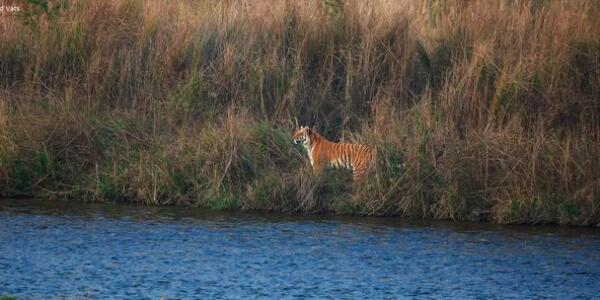
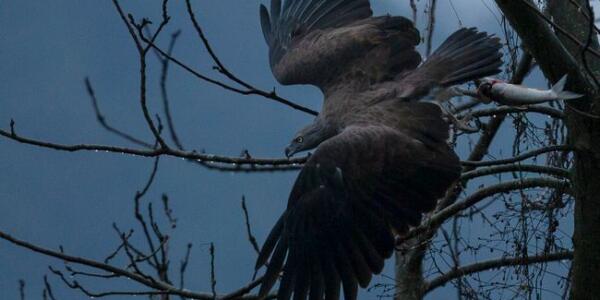
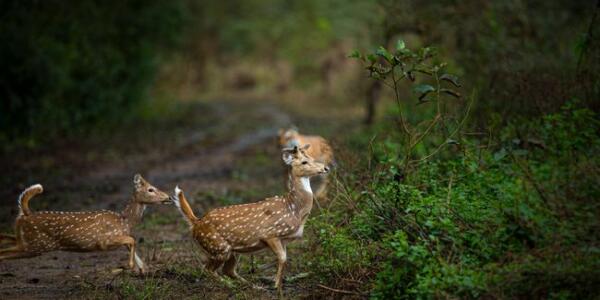
Day 12: Bandhavgarh - Jabalpur - New Delhi (200km, 4 hr drive + flight)
Jeep tiger safari in the park early in the morning. Tourists are driven for four hours to the airport in Jabalpur after lunch so they can catch the 17:50 flight to New Delhi. Arrival at 19:45 in New Delhi. Foreign visitors spend the night at the resort.
Day 13: New Delhi - Fly Out
After a relaxed breakfast, drive to New Delhi International Airport to board your flight back home/onward.
Guest Testimonials and Experiences
Our efforts have time and again been recognized by all our guests on TripAdvisor. With reviews that are 100% genuine, you can read them here or head on to our official TripAdvisor page to browse through them in detail.
ENQUIRE NOW
Lets plan your safari tour. Please fill the enquiry form below and our team will get back to you within 24 hours with a perfect safari package.
Related Tours for Tiger Site Seeing
Tigers occupy the pinnacle of the food chain and a healthy tiger population is an indicator of the well being of the whole forest. Throughout evolution, predators have had a regulatory influence on the population sizes of other species; it is thanks to carnivores, such as tigers, that the number of herbivores is kept in check. In turn, the populations can therefore only fluctuate between certain limits because of this “feedback mechanism”.
With the number of herbivores under control, but not depleted, the forest vegetation is likely to thrive provided humans do not over exploit it. Seeds will be dispersed by new growth will not be prevented by excessive grazing pressure. Healthy vegetation protects the rainwater and safeguards the water table. Many forest are important catchments areas for rivers, upon which many species, including human beings, depend.
Species at the top of the food chain are generally larger and require more space than other animals, particularly if they are territorial . Conserving such species in the wild protects the habitat of many other animals, as well as safeguarding the essential ecological processes such as water and nutrient cycling. Thus the tiger is the guardian of many other creatures.
09 NIGHTS / 10 DAYS
Related Tiger Safaris
15 NIGHTS / 16 DAYS
Related Tiger Safaris
13 NIGHTS / 14 DAYS
Related Tiger Safaris

